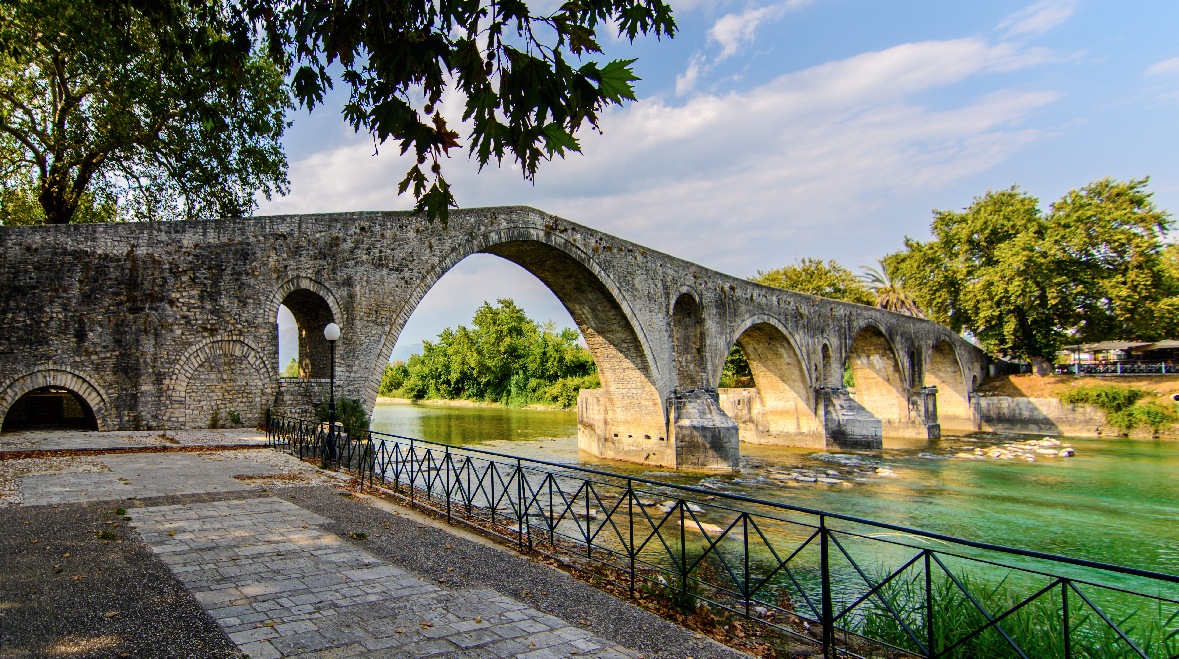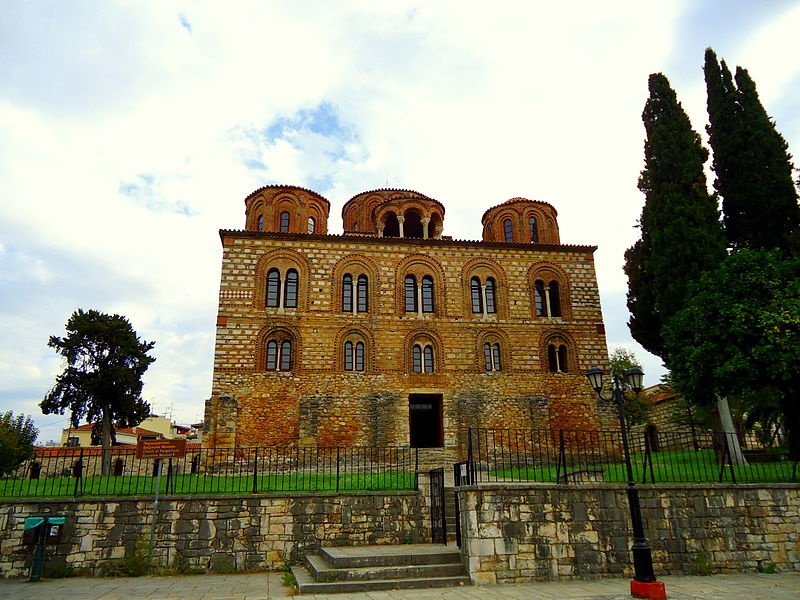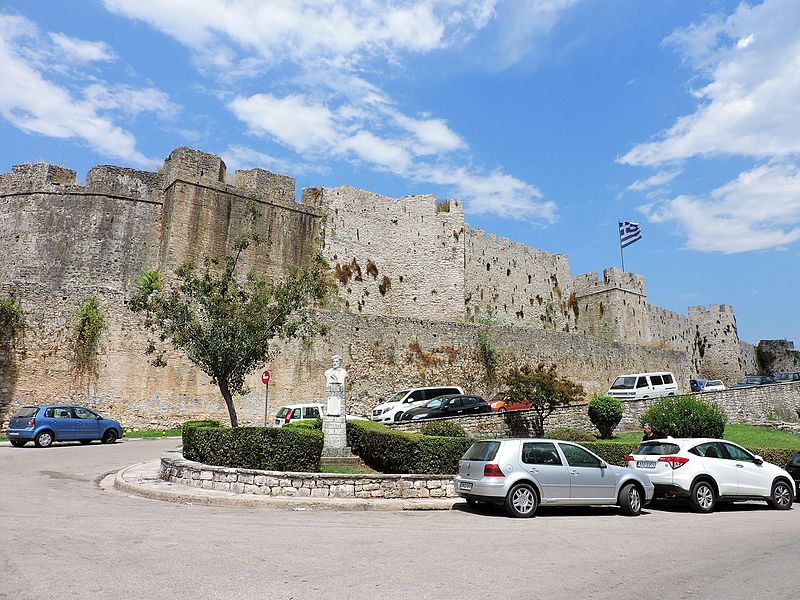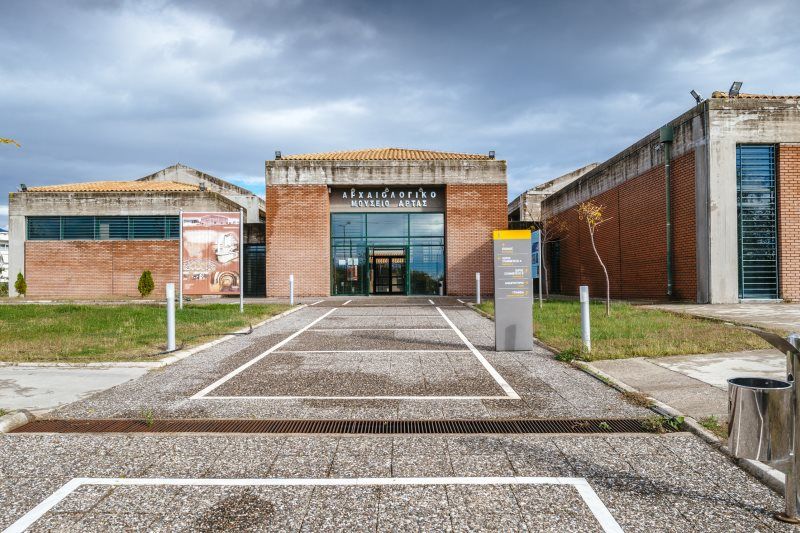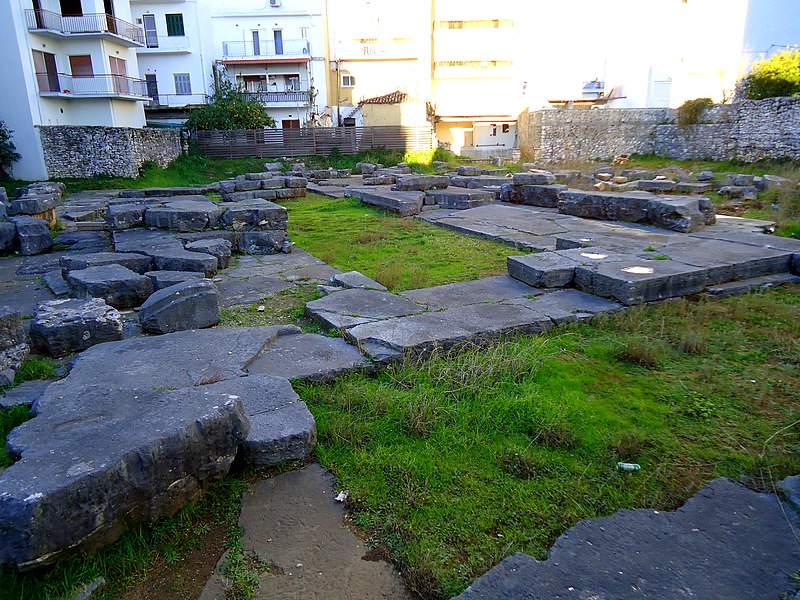Ancient Theater of Amvrakia

14°C
The Theater
When, where, how
In 318 BC. Pyrrhus of Epirus acceded to the throne. He was related to Alexander the Great via Alexander’s mother, Olympias. Epirus was but a small kingdom at the time, under Macedonia’s sphere of influence. Soon, the young king would turn it into a superpower and win his place in posterity as one of the most charismatic and noble leaders of Greek Antiquity.
Pyrrhus’ expansionist politics necessitated changes, so he transferred the administrative center of his kingdom from the interior to Amvrakia. The king expressed his ambitious vision in his new capital, decorating it with magnificent new buildings and brilliant works of art. According to Dionysius of Halicarnassus, a historian of the 1st century BC, these included the construction of two theaters, a large imposing theatre like the ancient theatre of Dodona and a smaller one close to the temple of Apollo.
Of the grand Theater of Amvrakia very little has come to light. Its largest part remains buried beneath the buildings of modern day Arta. The small theater however, the smallest theater ever discovered in Greece, has been satisfactorily preserved. It does not appear to have been intended primarily as a space for entertainment. Minor plays and musical works may have been performed there, but it was used mostly as a place of assembly. Amvrakians would gather in the small theatre to discuss administrative and religious matters, everything that preoccupied the Great Epirus of King Pyrrhus.
In contrast to most ancient Greek theatres, the small Theater of Amvrakia was not built on a natural incline, but rested on a filled slope. The backfill included older constructions: the foundations of houses dating to the 5th century BC and baths dating to the 4th century BC. The floors of the baths, made of small black and white river or sea pebbles depicted dolphins, an Erotideus (young Eros) stretching his hand to a swan, another blowing a conch.
With the passage of time, the small theater of Amvrakia was in turn covered by other buildings, possibly byzantine, ottoman, recent. Excavations uncovered it in 1976. It has since remained visible, a significant memento of the ancient city that has risen from below modern day Arta.
A king proudly walks through the streets of Amvrakia admiring his creations: a grand theatre and another, almost tiny, a true jewel nonetheless. Maybe deep inside he prefers the larger one, its grandeur, how it better complements his ambition.
He does not know that fate has elected to save the small theatre, the one with the charming, perfectly round orchestra…
Media
The building at a glance
- It is shaped in a perfect circle.
- Its floor does not survive.
- It had a stone proskenio (stage) of which 7.5 meters have been uncovered. It is estimated to have been 10 meters long and 2.4 meters tall.
- It is separated by two klimakes (stairways) into three kerkides (sections).
- It has five rows of seats.
- The prohedria, the front row reserved for dignitaries, is absent.
- Resting against the retaining wall to the east of the cavea, a stone well of the classical period (5th– 4th century BC) which was used until modern times. The mouth of the well was raised using stone pieces from the seats of the cavea.


